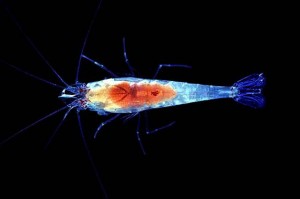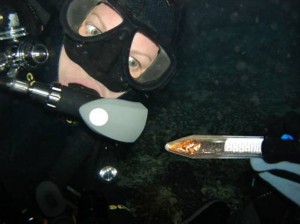Endemic

Typhlatya iliffei, a cave shrimp that is known only to a single anchialine cave system in Bermuda. It is listed as critically endangered (IUCN 2000). Photo, courtesy Tom Iliffe, Ph.D., Texas A&M University-Galveston
Endemic species are organisms that are native to an exclusive place, location, habitat, etc. Generally, endemic species are not found anywhere else on earth, and they are isolated to a particular location for a reason. Some of these reasons for isolation may include water quality (or quality of habitat), pollution preventing movement and transport, limited food source, geographic features that prevent dispersion (e.g., cave collapse), etc. Documenting pockets of endemic species and identifying their habitats as threatened/endangered is an important step in implementing conservation measures necessary to guarantee survival.
It is common for discrete water masses to develop in some submerged caves. This means that pockets of water with very different geochemical properties exist in different places throughout the system. This may be due in part to patterns of hydrologic flow, influence of tides, saltwater intrusion, groundwater withdrawals, etc. This is one factor that can further limit the range where organisms can survive. So creatures that are endemic to ONE cave system, may in fact be endemic to only one PART of that cave system. Protecting these microhabitats is critical for ensuring the survival of these species.


